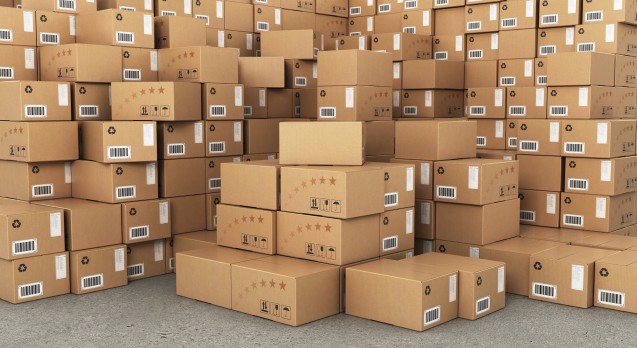Over the past five years, Amazon has slowly expanded into Latin America, testing the waters in Brazil, Argentina, Chile, and Mexico.
Despite the Seattle-based giant’s explosive success in the United States, Amazon has not yet made inroads as quickly in most of Latin America.
Part of the challenge is that Latin America already has its own e-commerce giant: MercadoLibre.
Founded in 1999 by Hernan Kazah and Marcos Galperin in Buenos Aires, Argentina, MercadoLibre is now the e-commerce site of choice in Argentina, Bolivia, Brazil, Chile, Colombia, Costa Rica, Dominican Republic, Mexico, Ecuador, Guatemala, Honduras, Peru, Panama, Uruguay, and Venezuela.
In Latin America, 47% of online shoppers buy on MercadoLibre while only 17% use Amazon. In Mexico, where Amazon offers similar services to the US, 38% of online shoppers still use MercadoLibre while just 21% use Amazon.
MercadoLibre has invested in dozens of companies and acquired fifteen tech companies across the region and is one of few large companies in Latin America that uses acquihiring to bring top talent into their team.
MercadoLibre was also the first Latin American tech company to trade publicly on NASDAQ, raising US$289M in a 2007 IPO.
The company is far from the only e-commerce site operating in Latin America, but it puts up fierce competition against Amazon’s expansion into the region.
Much like mobile giant Movile in Brazil, MercadoLibre reached its current level of success through a series of investments and acquisitions that pushed the company to become the undisputed market leader in the region.
Here’s a look at how MercadoLibre has done it so far.
Consolidating an e-commerce empire
MercadoLibre started as an e-commerce platform that enabled individual vendors to sell their products online. In many ways, MercadoLibre’s original business model resembled eBay’s. In fact, in 2001 eBay purchased a 19.5% stake in the company, which it sold in 2016.
The two companies continue to be close partners in Latin America. In 2015, MercadoLibre acquired Silicon Valley e-commerce startup Dabee, strengthening its position as the regional leader in e-commerce.
Beyond its e-commerce platform, MercadoLibre persistently tackles the significant issues facing Latin American e-commerce, most notably payment systems. In 2004, MercadoLibre debuted Mercado Pago, a secure online payment system to help shoppers purchase through their platform and other e-commerce sites in the region. Mercado Pago processed 138.7 million transactions in 2016. That same year, MercadoLibre acquired Argentine payments startup Mango to help expand its payments processing services.
MercadoLibre’s first two acquisitions in 2008, Classified Media Group and DeRemate.com, helped the platform establish niche classifieds sites for real estate agents and car sales.
In 2014, MercadoLibre acquired VMK, which owned Portal Inmobiliario in Chile and Guiadin Muebles in Mexico, both of which were among the biggest real estate classifieds sites in the countries where they were founded. The acquisition of VMK left previous CEO, Cristian Maturana, and his executive team in charge of managing the properties sites and related software, making for a rare acquihire that helped MercadoLibre branch out quickly into classifieds and compete against newer e-commerce models.
MercadoLibre Clasificados was a logical branching off of MercadoLibre’s vendor model, enabling individual sellers to use their technology to sell goods online.
Since it started, MercadoLibre has been actively acquiring startups, including at least fifteen major acquisitions that span e-commerce, payment processing, software solutions, and online classifieds. As in the case of VMK, MercadoLibre has been known to bring over these startups’ executive staff to continue managing the platforms after the acquisition.
While this method of acquiring startups, known as acquihiring, is quite common in the United States, it is still relatively unique to see a large company in Latin America bringing executive teams in to manage new businesses.
I recently published an article in TechCrunch about Movile, Brazil’s mobile giant, that highlights one of the only other companies in the region making use of this growth strategy.
Investing in the next generation of Latin American startups
MercadoLibre is an active investor in the growing Latin American tech ecosystem, leading the way for new e-commerce startups to follow in its footsteps.
In 2013, MercadoLibre debuted the MercadoLibre Commerce Fund, which co-invested US$10M into three startups alongside Wayra. This first fund focused only on companies that were using MercadoLibre’s API to improve financial services for SMEs.
MercadoLibre expanded its investments using the MELI Fund, which provides smart seed capital to Latin American startups that “that boost the e-commerce and tech ecosystem” in the region.
The MELI Fund is responsible for at least 23 investments since it launched in 2013, most of which target startups in e-commerce, logistics, and payments industries. Recent investments include Brazil’s trucking startup Mandaê and Argentine insurtech startup 123Seguro. While MELI’s main offices are still in Argentina and Brazil, it invests across Latin America, including in Chile, Mexico, and Colombia.
The MELI Fund has invested over US$25M in Series A and B rounds in the region, usually as a co-investor. The Fund recently had its first exit when Chilean SaaS company Nubox acquired Colppy, a software solutions platform from Argentina that was one of the MELI Fund’s early investments.
The future of MercadoLibre
MercadoLibre is one of the biggest players in the booming Latin American e-commerce industry.
As one of the first movers in the region, the company has consistently held off international competitors like Amazon, Walmart, and Alibaba through its strategic acquisitions and investments, cementing its place as Latin America’s go-to e-commerce site.
As the competition for Latin America’s online shoppers becomes fiercer, MercadoLibre will need to continue to innovate, improve services, and increase offerings to stay relevant.


